Q1. The ratio of speeds of a boat in still water to that of the stream is 13:7.The boat goes a certain distance along with the current in 3 hours. Find the time taken to come back the same distance.
(a)8hours
(b)9hours
(c)10hours
(d)12hours
(e)13hours
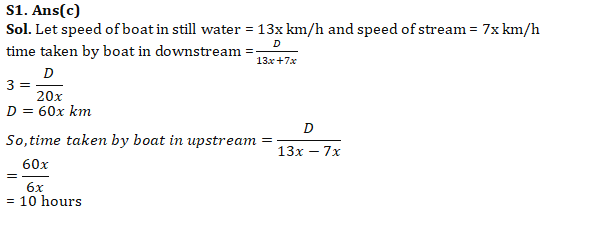
Q2. A boat covers 18 kms upstream and 36kms downstream in 6 hours, while it covers 36 kms upstream and 18 kms downstream in![]() hours, then speed of current is___
hours, then speed of current is___
(a)3kmph
(b)4kmph
(c)5kmph
(d)6kmph
(e)9kmph
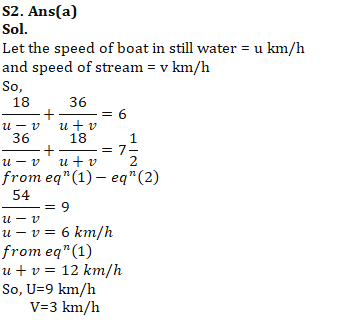
Q3. A boat takes 18 hours to travel a distance upstream and 6 hours to travel the same distance in downstream. If the speed of the boat in still water is 8kmph then what is the speed of the stream?
(a)5kmph
(b)7kmph
(c)6kmph
(d)4kmph
(e)3kmph
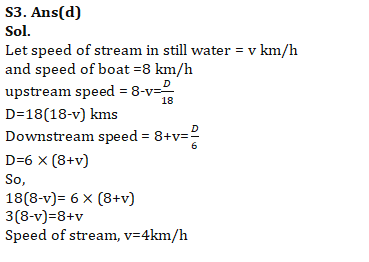
Q4. A boat goes 32 km downstream in 48 min. find the speed of boat in upstream, if speed of stream is 10 kmph.
(a)30kmph
(b)20kmph
(c)18kmph
(d)19kmph
(e)32kmph
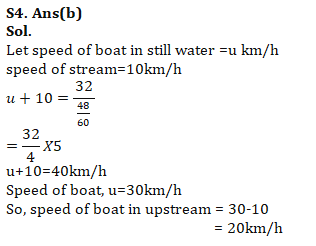
Q5. A boat goes 120 km against the stream in 90 min and return in 60 min. find the rate of flow of river.
(a)12kmph
(b)15kmph
(c)18kmph
(d)19kmph
(e)20kmph
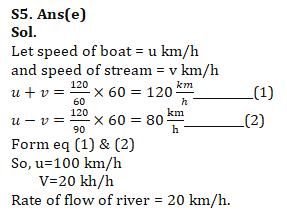
Q6. A boat travels downstream from A to B and upstream from B to A in 24 hours. If the speed of the boat in still water 9 kmph and the speed of current is 3 kmph. What is distance between A and B?
(a)90 km
(b)82 km
(c)80 km
(d)93 km
(e)96 km
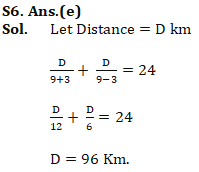
Q7. Excluding stoppages, the speed of bus is 105 kmph and including stoppages it is 98 kmph. For how many minutes does the bus stop per hour?
(a) 4
(b) 6
(c) 5
(d) 7
(e) 2

Directions (8-11): In the following questions, calculate quantity I and quantity II, compare them and answer
(a) If quantity I > quantity II
(b) If quantity I < quantity II
(c) If quantity I ≥ quantity II
(d) if quantity I ≤ quantity II
(e) if quantity I = quantity II or no relation can be established
Q8.
Quantity 1: – A 180m long train crosses the 270m long bridge in 10 sec. then find the speed of train. (in m/s)
Quantity 2: – A person travels 60kms in 1 hour, the next 120 kms in 3 hour and next 180 km in 2 hour. find the average speed during the whole journey. (in m/s)
(a) If quantity I > quantity II
(b) If quantity I < quantity II
(c) If quantity I ≥ quantity II
(d) if quantity I ≤ quantity II
(e) if quantity I = quantity II or no relation can be established
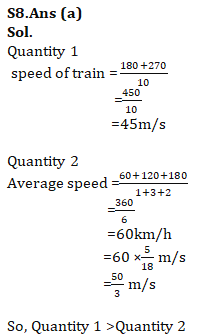
Q9.
Quantity 1: – find the area of rectangle whose length is 17m and breadth is 19m.![]()
Quantity 2: -find the area of rhombus whose diagonal sare 18m and 32m respectively.![]()
(a) If quantity I > quantity II
(b) If quantity I < quantity II
(c) If quantity I ≥ quantity II
(d) if quantity I ≤ quantity II
(e) if quantity I = quantity II or no relation can be established
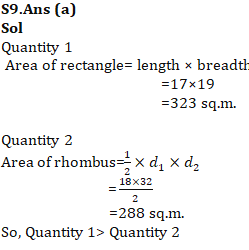
Q10.
Quantity 1: -B is 10% more than C and 20% more than A. if average of A, B and C is ![]() . find out the value of B
. find out the value of B
Quantity 2: –if A: B= 3:4 and B:C =8:9, the average of A, B and C is 46. find out value of B
(a) If quantity I > quantity II
(b) If quantity I < quantity II
(c) If quantity I ≥ quantity II
(d) if quantity I ≤ quantity II
(e) if quantity I = quantity II or no relation can be established
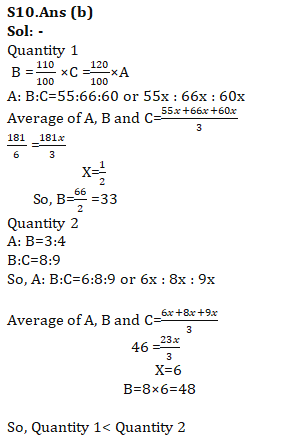

(a) If quantity I > quantity II
(b) If quantity I < quantity II
(c) If quantity I ≥ quantity II
(d) if quantity I ≤ quantity II
(e) if quantity I = quantity II or no relation can be established
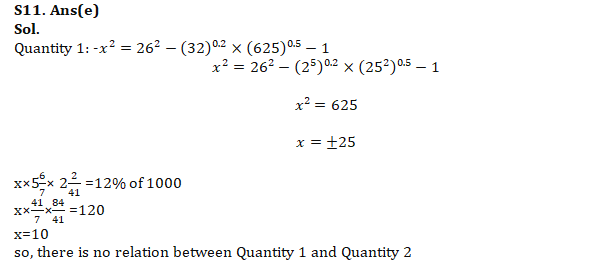
Direction (12- 15): In the following questions, two equations numbered I and II are given. You have to solve both equations and give answer among the following options.

(a) if x > y
(b) if x ≥ y
(c) if x < y
(d) if x ≤ y
(e) if x = y or the relationship cannot be established.
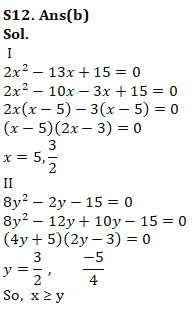

(a) if x > y
(b) if x ≥ y
(c) if x < y
(d) if x ≤ y
(e) if x = y or the relationship cannot be established.
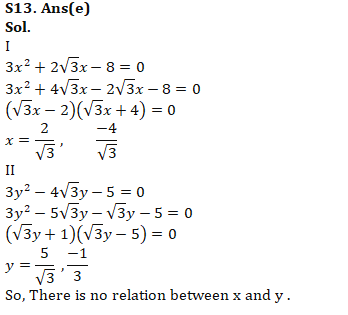
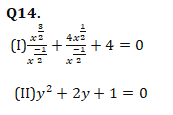
(a) if x > y
(b) if x ≥ y
(c) if x < y
(d) if x ≤ y
(e) if x = y or the relationship cannot be established.
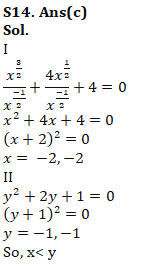

(a) if x > y
(b) if x ≥ y
(c) if x < y
(d) if x ≤ y
(e) if x = y or the relationship cannot be established.
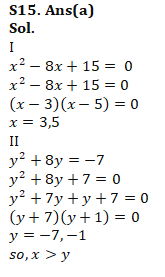
If you want to study Quantitative Aptitude for IBPS PO Prelims then you can also check out the video given below:
- Quantitative Aptitude Study Notes for Bank Exams
- Quantitative Aptitude Questions for all Competitive Exams





 Profit, Loss & Discount – Concept + ...
Profit, Loss & Discount – Concept + ...
 Nainital Bank Recruitment 2025-26 Notifi...
Nainital Bank Recruitment 2025-26 Notifi...
 Daily Current Affairs Quiz 13 December 2...
Daily Current Affairs Quiz 13 December 2...








